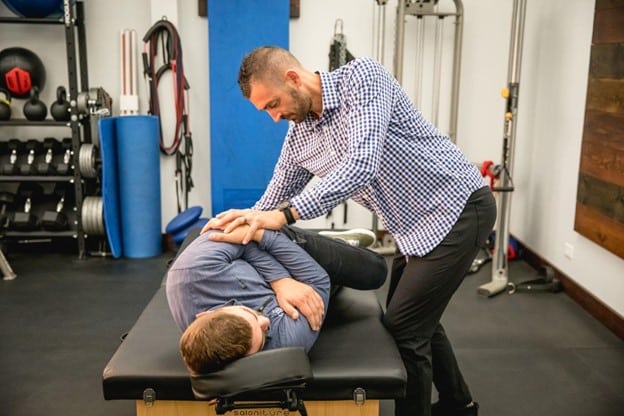There are a lot of myths out there about spinal manipulation, also known as adjustments or “back cracking. About 90% of all our new patients come looking for relief and are familiar with chiropractic adjustments. But, many other new patients come to our office with genuine concerns about its safety. Is it good for you? Are you actually hurting your joints if you do it yourself? Our very own chiropractic physician and spine pain specialist has some answers on the noises you hear when cracking your back and during your adjustments so that you can better understand if this type of treatment is for you.

By: Alex Earl, DC DACRB
Spine Pain Specialist
Believe it or not, this is one of the most frequently asked questions in our Fort Oglethorpe office: “What makes that CRACK noise?” Every day, we help our patients overcome pain, discomfort and stiff joints so that they can continue to live an active and healthy life. One of the ways we achieve these results is through the use of spinal manipulation – also known as the “adjustment”.
When a chiropractor performs an adjustment, they are applying a quick and precise force to a joint in order to move it beyond its normal range of motion. This movement can create a popping or cracking sound, which is caused by a sudden release of gas bubbles that have formed within the joint’s synovial fluid. This fluid helps to lubricate and cushion the joint, and when it is moved quickly, the gas bubbles can “pop” and release pressure. This is similar to the sound that occurs when you crack your knuckles.
VIDEO: Real Time MRI Image of a Joint “Cracking”
Chiropractors use adjustments to improve joint function and mobility, reduce pain and inflammation, and promote overall health and well-being. By restoring proper alignment and movement to the joints, chiropractors can help to alleviate pain and improve function in various parts of the body.
So, why does chiropractic care reduce pain?
One theory is that by restoring proper alignment and movement to the joints, chiropractors are able to alleviate pressure on nerves and other soft tissues that may be causing pain. Stiff joints can put pressure on surrounding nerves and tissues, sometimes leading to muscle tightness, pain, and other symptoms. By correcting these stiff joints, chiropractors can reduce this pressure and help to alleviate pain and calm down some of the tight muscles in the surrounding area.
Another theory is that chiropractic adjustments can stimulate the release of endorphins, which are the body’s natural painkillers. Endorphins are released in response to a variety of stimuli, including exercise, stress, and pain, and they work to block pain signals from reaching the brain. By stimulating the release of endorphins, chiropractic adjustments may help to reduce pain and improve overall mood and well-being.
As I mentioned before, every day in our office we help patients overcome spine pain naturally. Patients are often surprised at the Overall, chiropractic care can be an effective treatment option for a variety of musculoskeletal conditions, including back pain, neck pain, headaches, and much, much more.
Are you constantly feeling stiff in the same spot? If so, read more about what your options are!
If you feel like you’re constantly needing to pop or crack your back, it is probably because there is an area that lacks sufficient mobility and should be addressed by your chiropractor. Our Atlas Total Health team of highly trained and highly skilled chiropractors are ready to help you improve your overall health and change the way you think about your well-being.
If it is truly a mobility limitation in a joint, then you’ve got plenty of options to help. These include stretching, yoga, aerobic exercise like walking or running, and manual therapy. Having said that, though, there are many cases where all of those strategies are not able to achieve the desired relief and mobility to those stiff and stubborn joints.
This is the perfect opportunity to consider spinal adjustments to help solve your discomfort. In fact, more and more research is coming out in support of spinal manipulation (adjustments) to help relieve spinal joint pain.
Real Life Case Study: “I want to play catch with my grandson!”
Take, for example, a recent new patient we saw named “Anna”. She came to us after an accident resulted in her having extreme neck and low back pain. Her primary goal was to play catch with her grandson, but every time she tried to throw, her neck would immediately flare up and she’d have to stop. She tried stretching but it only made her neck worse.
This really worried her as she felt like something more seriously was at hand and it was getting worse the more she stretched. After listening to her explain what she was going through, we were able to strategize a plan of action that was specific to her needs that included chiropractic care. We adjusted her spine and did some additional joint mobility work, which gave her almost immediate relief. We also worked on her middle and lower back to also give her those powerful pain modulating endorphins that I mentioned earlier.
It was a challenging case, to say the least, but I am proud to say that “Anna” is on the path to recovery and doing really well. This is due, in large part, to her consistency with her appointments AND her joints calming down with each adjustment. She has been re-introduced to stretching, except this time she does not experience any pain.
In fact, she came in recently with the exciting news that she played catch with her grandson and had no neck pain for the first time in months!
Do this next!
Maybe you (or someone you know) is in a similar situation to “Anna”? If so, I have great news for you today… You are in the right place for relief. Every day, Chattanooga and North Georgia residents are getting the same relief as our dear friend, “Anna”. If you’d like to learn more about your options for overcoming spine pain, do the following:
- Share this Article with a Friend or Family member who has recently asked you, “What happens when you get “adjusted” at the chiropractor?”
- Call our office TODAY at (866) 668-0108 to book your next appointment!
- Keep an eye out for next month’s article, which will be about The 10 Things You Need To Know About Back Pain in 2023!
References:
- Herzog, W. (2010). The biomechanics of spinal manipulation. Journal of Bodywork and Movement Therapies, 14(3), 280-286.
- Cramer, G. D., Ross, K., Raju, P. K., Cambron, J., Cantu, J. A., Bora, P., & Fergus, M. (2011). Distribution of cavitations as identified with accelerometry during lumbar spinal manipulation. Journal of Manipulative and Physiological Therapeutics, 34(5), 338-345.
- Pickar, J. G. (2002). Neurophysiological effects of spinal manipulation. The Spine Journal, 2(5), 357-371.
- Bialosky, J. E., Bishop, M. D., Price, D. D., Robinson, M. E., & George, S. Z. (2009). The mechanisms of manual therapy in the treatment of musculoskeletal pain: A comprehensive model. Manual Therapy, 14(5), 531-538.
- Maigne, J. Y., & Vautravers, P. (1998). Mechanisms of action of spinal manipulative therapy. Joint Bone Spine, 65(5), 481-487.


